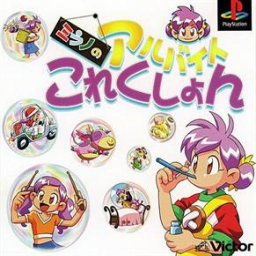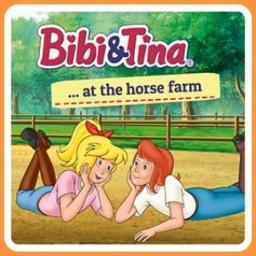Have done a bit more work since, and while buying Lion a better weapon sets him nearly equal to Tin Man in strength, it just feels like too much of a drain on resources. Lion's turn is usually going to go much later than the enemies, and will end up taking lots of damage throughout. On my go through Budding Highlands/Spring 1 with Strawman, I ran out of MP on Dorothy a little bit before the end of it- Lion will have to go through a lot more healing.
My conclusion is that it's probably best to buy his weapon after beating Budding Highlands/Spring 1, alongside some armor for Dorothy.
-
Father Io isn't bad to beat as soon as possible, but I know for a fact he's a challenge if you try his later iterations too early. I'd say go for Io 2 after Spring 2.
-
I've also been listing out the different enemies and their EXP drops, trying to figure out which encounters we skip and which ones we fight. Right now Hijinks are definitely worth avoiding completely (they deal so much damage), and I think I'd also recommend skipping the anemone encounters at the end of Spring 1.
Work's been a bit slow on it lately, but I'll pick up with it.
Gamer move, right there
5head stuff
That post requires a long and somewhat technical answer, but bear with me and all will be - well, perhaps not exactly clear, but hopefully at least a little less puzzling.
The original U.S. TV standard was based on exactly a 60.000 Hz field rate and so a 30.000 Hz frame rate. Audio was FM, living on a carrier 4.5 MHz up from the bottom of a 6 MHz channel (or nearly the bottom; the audio subcarrier is actually referenced to the video carrier frequency, and the choice of a 4.5 MHz spacing wasn’t entirely arbitrary, either - but I’m trying to keep this shorter than a novel, so I’ll leave it at that), and all was well with the world. The components of the video signal didn’t interfere with the audio or vice-versa.
Then along comes “compatible color,” originally an invention of NBC and their parent company, RCA. In this system, which eventually became known around the world as the 1953 NTSC color television system, two new signals had to be added to the existing video + audio combination, without going outside the limits of the 6 MHz TV channel allocation. The way color is encoded in the system is to add a pair of “chrominance” or “chroma” signals, which along with the original video (now luminance, or “Y”) could be mathematically combined to generate the RGB signals needed to drive a color CRT. But getting these additional signals to coexist with the Y and audio required some ingenious shoehorning. The color information would be modulated on a new “color subcarrier,” that would be parked somewhere between the original video carrier frequency and the existing audio subcarrier. Because of the way AM works (and both the original video signal and the modulation of the color subcarrier are versions of amplitude modulation), the components of the resulting signal show up clustered around multiples of the line rate (for the U.S. system, originally 15,750 Hz). So if you picked the right color subcarrier frequency, you could get the original luminance signal’s components and the new chroma components to nicely interleave with one another, and in the receiver be separable using a circuit called a “comb filter.” So it was easy - just pick a color subcarrier frequency that was an odd multiple of half the line rate (don’t worry about it, just know that the math works out), and this trick would work out. A color carrier offset around 3.583 MHz was chosen, as 3.583 MHz = 455 x (15.750/2) kHz. Problem solved!
Except that it wasn’t. There was some concern that, because of the relationship between the color and audio subcarriers (remember, I said the choice of 4.5 MHz for the audio wasn’t completely arbitrary either; it’s also tied to the line rate), the two signals would interfere with one another. The solution was to either move the audio subcarrier a little bit, or move the color subcarrier a similar amount. There was some concern that moving the audio would cause problems in existing receivers, so the color subcarrier frequency had to change. But remember, THAT frequency HAS to be related to the line rate, or the luminance and chroma components would interfere.
So to make a long story short (I know, too late), the line rate - and with it, the frame and field rates - was dropped by a factor of 1000/1001 (and there’s no need to make this even longer by analyzing why THAT was a good choice). The 15,570 Hz line rate became 15,750 x (1000/1001), or 15,734,26+ Hz. The color subcarrier wind up at the now-familiar 3.579545) MHz, and the field rate at 59.94005994… (exactly 60 x 1000/1001). And since the frame rate is half the field rate, we wind up with the 29.97+ Hz frame rate. The audio subcarrier, though, was left right where it was.
The kicker is that a while after the system was adopted, they went back and tested some of the black-and-white sets that had been on the market at the time, and found that they could easily have handled the shift in the audio subcarrier, had that been the route chosen! But by then, of course, it was too late to change, and we’ve had to put up with the weird-looking numbers in the NTSC color TV standard ever since.
Oh, and be sure to check the site rules if you haven't already. When you do submit for a game, make sure to read those rules too.
They've been getting progressively stricter over a long period of time, especially since the ownership change.
Feel free to run the game on your own though, as before speedrunning sites existed people just kept spreadsheets. SR.C isn't the singular authority on speedrunning.
Hello, we are currently 15 years old and we want to become a walrus. We know there's a million people out there just like us, but we promise you we're different. On December 14th, we're moving to Antarctica; home of the greatest walri. We've already cut off our arms, and now slide on our stomachs everywhere we go as training. We may not be a walrus yet, but I promise you if you give us a chance and the support we need, we will become the greatest walrus ever. Thank you all.
Yeah, in this case, They/Them still seems accurate.









